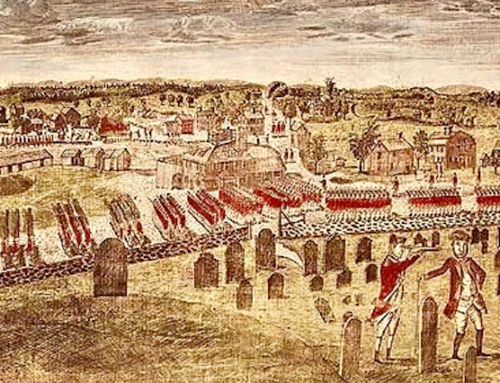 I discovered an old letter last week, hidden between the pages of an old book, the content of which has been haunting me ever since. It was addressed to me at an old address in Florida and I seem to have tucked it away for safekeeping. What I read astounded me as it contains revelations about J.R.R. Tolkien which I don’t believe have ever been published. It was a photocopy of a letter written by George Sayer, a good friend of both Lewis and Tolkien, and was addressed to Dame Felicitas Corrigan, a Benedictine nun who was a friend of George Bernard Shaw, Siegfried Sassoon, Alec Guinness and Rumer Godden. It had been sent to me from England by my late friend Stratford Caldecott who had appended to it a brief handwritten question: “Shall I write about the discovery of this letter for StAR?” Stratford Caldecott, who should be no stranger to readers of The Imaginative Conservative, was a great Catholic writer who died in 2014 at the tragically young age of sixty. The “StAR”, to which he referred, is the St. Austin Review, the Catholic cultural journal that I’ve edited since 2001. His note was dated November 22, 2006. I’ve checked the content of the St. Austin Review in the months after this date and can find no trace that Stratford ever did write on this.
I discovered an old letter last week, hidden between the pages of an old book, the content of which has been haunting me ever since. It was addressed to me at an old address in Florida and I seem to have tucked it away for safekeeping. What I read astounded me as it contains revelations about J.R.R. Tolkien which I don’t believe have ever been published. It was a photocopy of a letter written by George Sayer, a good friend of both Lewis and Tolkien, and was addressed to Dame Felicitas Corrigan, a Benedictine nun who was a friend of George Bernard Shaw, Siegfried Sassoon, Alec Guinness and Rumer Godden. It had been sent to me from England by my late friend Stratford Caldecott who had appended to it a brief handwritten question: “Shall I write about the discovery of this letter for StAR?” Stratford Caldecott, who should be no stranger to readers of The Imaginative Conservative, was a great Catholic writer who died in 2014 at the tragically young age of sixty. The “StAR”, to which he referred, is the St. Austin Review, the Catholic cultural journal that I’ve edited since 2001. His note was dated November 22, 2006. I’ve checked the content of the St. Austin Review in the months after this date and can find no trace that Stratford ever did write on this.
As for George Sayer, with whom I had corresponded when doing research for my book, Literary Converts, he wrote an excellent biography of C. S. Lewis, which was full of his own personal memories of his friendship with him. He recalls a hike in the west of England in the company of Lewis, Tolkien and Warnie Lewis, Lewis’ older brother. The Lewis brothers were believers in walking briskly in order to get physical exercise, which made them frustrated by Tolkien’s frequent halts to admire the beauty of a flower or a tree. Exasperated by these incessant interruptions to their forward march, they asked Sayer to walk with the dawdling Tolkien so that they could stride on at the pace they desired, arranging to meet the stragglers at the pub.
But now to the rediscovered letter, which begins thus: Dame Felicitas, Here is Lewis’s Patmore. The value is in the index and the underlinings. Unlike most dons, he really had literary taste – he knew great poetry when he met it.
Evidently, Sayer had sent Dame Felicitas his copy of a volume of Coventry Patmore’s poems, which had presumably once belonged to Lewis. Dame Felicitas had written a dissertation on Patmore, a Victorian poet and convert to the Catholic faith, while she was studying at the University of Liverpool. Lewis, for his part, was a great admirer of Patmore’s poetry, as is evident from his references to Patmore in the three volumes of his published letters. This is all very interesting in its own right, as is the revelation contained in the next paragraph: He never recovered from his N. I. Prot attitude to Our Lady. His grandfather Hamilton, the local Belfast vicar, was violently anti-R.C.
The abbreviation, “N. I. Prot”, is shorthand for Northern Ireland Protestant, whereas “R.C” (obviously) is an abbreviation for Roman Catholic. This says nothing which has not already been said. It is the next paragraph that contains the real revelatory bombshell: But Tolkien in a letter to me (still unpublished) wrote: “I attribute whatever there is of beauty and goodness in my work to the influence of the Holy Mother of God.”
Now this is really something! It is not that Tolkien’s love for the Blessed Virgin Mary is a surprise or that it has not been revealed before. On the contrary, it is well documented. He writes in his published letters of the “beautiful devotion to Our Lady that has been God’s way of refining so much our gross manly natures and emotions” and to a Jesuit friend he wrote of “Our Lady, upon which all my own small perception of beauty both in majesty and simplicity is founded”. In addition, with respect to The Lord of the Rings, he wrote that “the invocations of Elbereth, and the character of Galadriel as directly described (or through the words of Gimli and Sam) were clearly related to Catholic devotion to Mary”.
This is all very well, indeed splendid, but what is extra special about these newly revealed words of Marian devotion is the attribution of all that is good and beautiful in his work to the Blessed Virgin’s “influence”. Such influence must include, in this context, the influence of her intercession, the power of her prayers. It is not simply that his devotion to her has refined his sensibility, nor is it simply that his perception of beauty is founded upon her own beauty, nor is it merely that some of this is reflected in the Marian characteristics of some of the characters in his own work. It is that her prayers empowered his Muse. It is she that inspired the words and blessed the pen as the words poured forth onto the page. He wrote with her assistance. It was her voice that was singing in harmony with his.
Homer had begun The Iliad with a prayer to his Muse: Sing Muse, of the anger of Achilles and its destructiveness. One can imagine Tolkien beginning his own epic with a similar prayer: Sing Mary, of the power of the One Sin to rule them all and of its destructiveness, and sing Mary of the Sin’s own destruction on the Mountain of Doom, known as Golgotha.
This essay was first published here in June 2022.
The Imaginative Conservative applies the principle of appreciation to the discussion of culture and politics as we approach dialogue with magnanimity rather than with mere civility. Will you help us remain a refreshing oasis in the increasingly contentious arena of modern discourse? Please consider donating now.
The featured image is courtesy of Pixabay.







I cannot even imagine the whirlwind of the wonder, joy and astoundment spinning in your mind as you read the words, Mr. Pearce. It must have been a near magical moment. Might I be so bold to suggest a short essay about your personal experience and what went through you as you processed your discovery?
Please publish more reflections on the extraordinary articulations of our Catholic Faith by these saintly GIANTS.
Were can I find a print of the letter?
This was my first reading of your publication. I am impressed and very much enjoyed. I look forward to future articles.
That was amazing! I have tears running down at the beauty of the beauty of the imagined prayer to Our Lady before writing Tolkien’s epic.
The influence of Mary, whether in prose or comments about Roman Catholicism, seems to be a Divine chasm that readily separates the message espoused by Jesus from the implications of secular definitions of various Religions. She is the gateway which opens the truth-path that must be followed to understand the elements of Catholicism.
What is the “one sin” Pearce refers to in his speculative ending: “Sing Mary, of the power of the One Sin to rule them all and of its destructiveness, …”
It is obvious to me that the presence of Mary is at the very heart of Beauty in Catholic Culture. In particular I hear it in much of Palestrina, Victoria and even Handel. It first came to me when listening to Handel’s “Israel in Egypt” several years ago. There is a luminous, ecstatic – yet somehow chaste – aspect of beauty there that could only have come from The Mother of God herself, and which pours forth from her Immaculate Heart to everyone who has ears to listen, and eyes to see. Whenever I recite The Loreto Litany, I now insert “Heart of Beauty” after “Morning Star.”
This is a wonderful article Joseph, Mr. Pearce, tahnk you.
Could you possibly provide the dates of these letters? Maybe you have seen, maybe not, a small group of us over at https://www.tolkienguide.com/guide/letters/ on the Tolkien Collectors Guide have begun the long task of noting all the known letters from and to J. R. R. Tolkien and it would be of immense help to us if we could add these snippets with dates.
Many thanks for the article and any help would be most gratefully appreciated.
Phil (@onthetrail over on TCG).